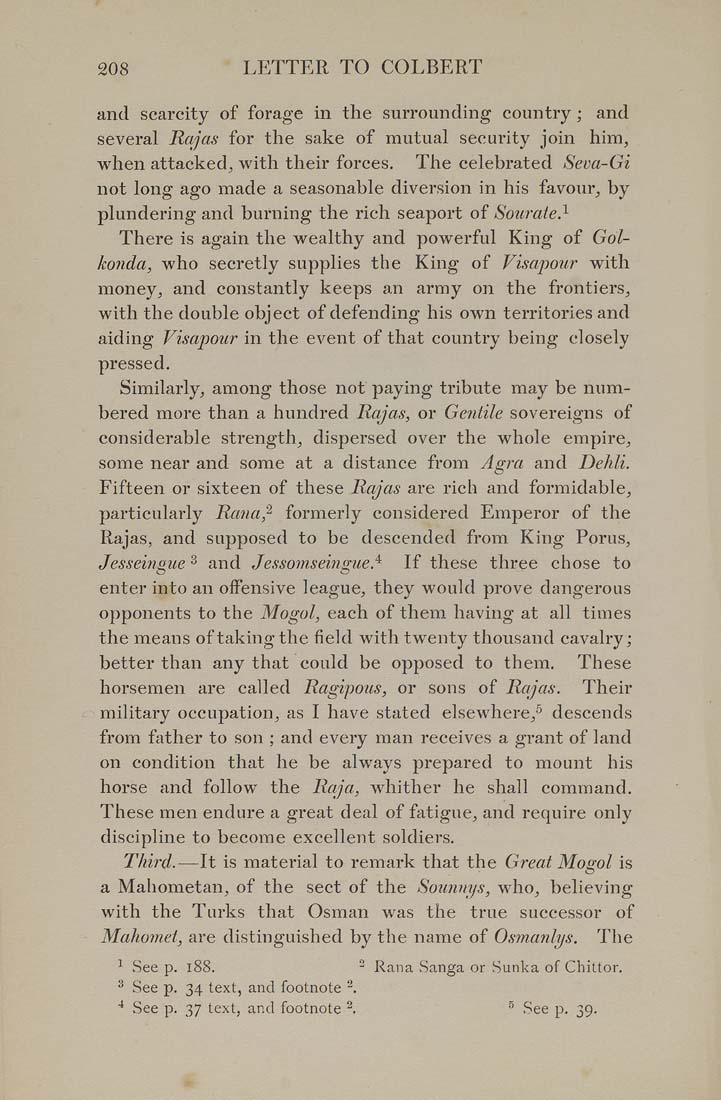208 LETTER TO COLBERT
and scarcity of forage in the surrounding country ; and
several Rajas for the sake of mutual security join him,
when attacked, with their forces. The celebrated Seva-Gi
not long ago made a seasonable diversion in his favour, by
plundering and burning the rich seaport of Sourate.^
There is again the wealthy and powerful King of Gol¬
konda, who secretly supplies the King of Visapour with
money, and constantly keeps an army on the frontiers,
with the double object of defending his own territories and
aiding Visapour in the event of that country being closely
pressed.
Similarly, among those not paying tribute may be num¬
bered more than a hundred Rajas, or Gentile sovereigns of
considerable strength, dispersed over the whole empire,
some near and some at a distance from Agra and Dehli.
Fifteen or sixteen of these Rajas are rich and formidable,
particularly Rana,^ formerly considered Emperor of the
Rajas, and supposed to be descended from King Porus,
Jesseingue ^ and Jessomseingue.*^ If these three chose to
enter into an offensive league, they would prove dangerous
opponents to the Mogol, each of them having at all times
the means of taking the field with twenty thousand cavalry;
better than any that could be opposed to them. These
horsemen are called Ragipous, or sons of Rajas. Their
military occupation, as I have stated elsewhere,^ descends
from father to son ; and every man receives a grant of land
on condition that he be always prepared to mount his
horse and follow the Raja, whither he shall command.
These men endure a great deal of fatigue, and require only
discipline to become excellent soldiers.
Third.—It is material to remark that the Great Mogol is
a Mahometan, of the sect of the Sounuys, who, believing
with the Turks that Osman was the true successor of
Mahomet, are distinguished by the name of Osmanlys. The
' .See p. i88. - Rana .Sanga or Sunka of Chittor.
'^ See p. 34 text, and footnote ^.
^ See p. 37 text, and footnote ^. ^ .See p. 39.
|








